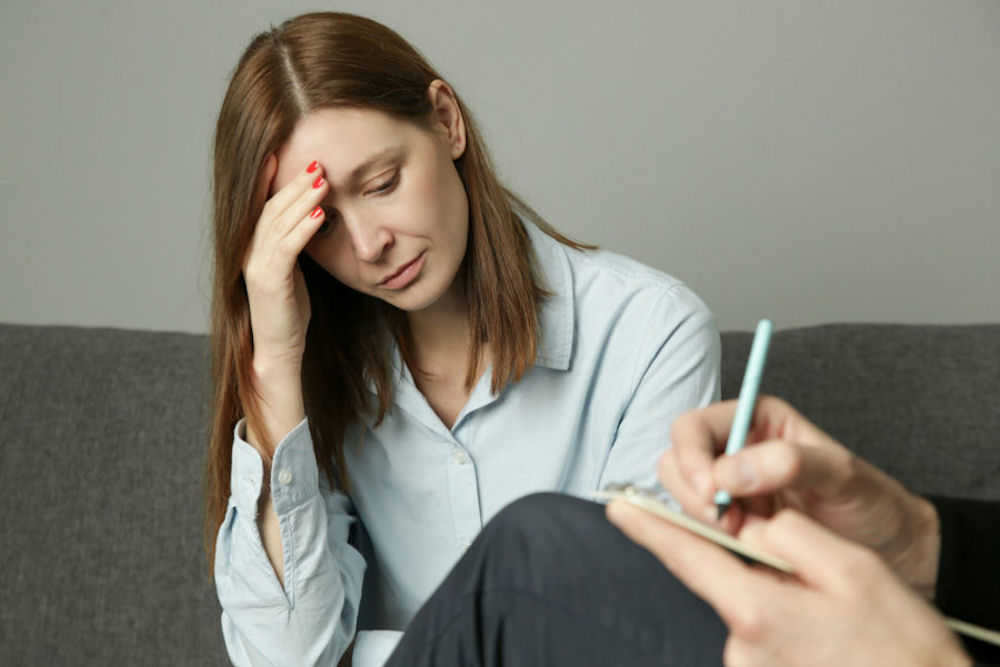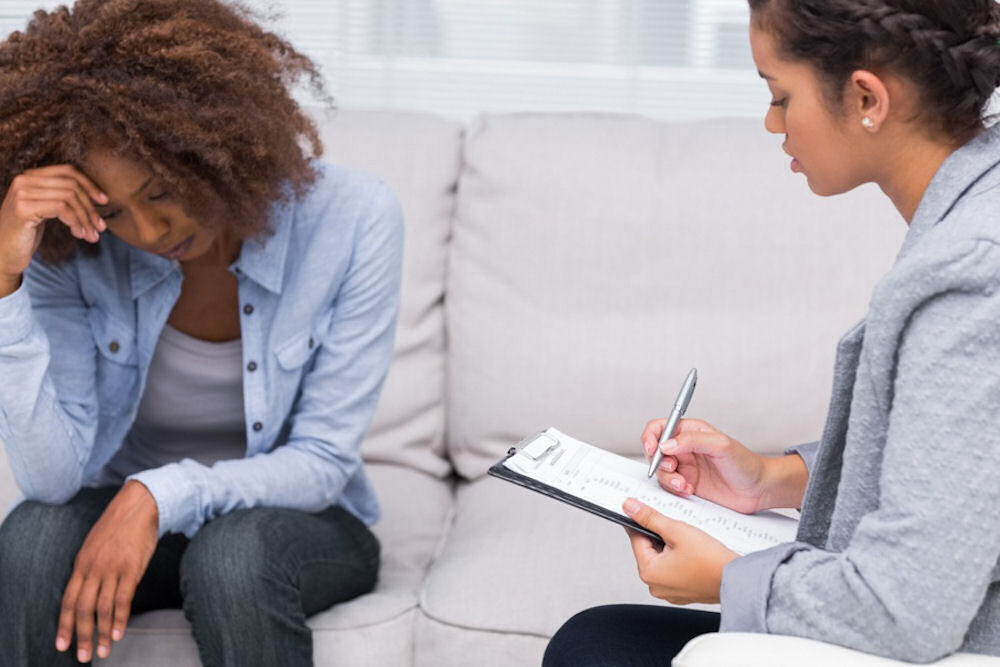It’s not uncommon to hear these terms used interchangeably, but they’re not the same. Both are mental health conditions and can have a significant impact on one’s life, but they each have their unique characteristics and are experienced differently. Understanding these differences is crucial, not just for those dealing with these conditions, but also for their loved ones who are trying to provide support.
Anxiety is like that nagging feeling of worry or fear that doesn’t seem to go away. It’s like a constant buzz in the background of your mind, making it hard to focus on anything else. On the other hand, depression can feel like a heavy blanket of sadness or hopelessness that makes even the simplest tasks feel overwhelming. While both conditions can cause distress, the way they manifest and affect one’s life can vary greatly. Below we delve deeper into these differences and shed light on these often-misunderstood conditions.
What is Anxiety?
Anxiety is any living creature’s natural response to stress. It’s the butterflies you feel in your stomach before a big presentation, the spiraling thoughts when faced with uncertainty, or the heightened alertness during a problematic situation. In small doses, anxiety serves as an adaptive mechanism, preparing you to deal with threats and challenges. However, when anxiety becomes excessive, persistent, and interferes with daily life, it can transform into an anxiety disorder.
Here is how the two different states of anxiety differ:
- Normal Anxiety: Occasional nervousness or worry is part of being human. These reactions help us stay alert and respond effectively to life’s demands.
- Anxiety Disorders: These go beyond the usual jitters. People with anxiety disorders experience intense, uncontrollable worry and fear about everyday situations, and many times these feelings are disproportionate to the actual danger and persist for a long time.
What are the Different Types of Anxiety?
Anxiety disorders can rear their unwanted heads in several different forms. Such as
- Generalized Anxiety Disorder (GAD): Excessive and persistent worry about various aspects of life, often without a specific trigger.
- Symptoms: Chronic anxiety, restlessness, muscle tension, fatigue, and difficulty concentrating.
- Social Phobia (Social Anxiety Disorder): Intense fear of social situations, leading to avoidance.
- Symptoms: Fear of embarrassment, blushing, trembling, and avoidance of social interactions.
- Panic Disorder: Recurring and unexpected panic attacks characterized by intense fear and physical symptoms.
- Symptoms: Shortness of breath, chest pain, heart palpitations, and sweating.
- Agoraphobia: Fear of places or situations that might cause panic or make one feel trapped.
- Symptoms: Avoid crowded places, public transportation, or open spaces.
- Phobias: Irrational and overwhelming fear of specific objects or situations (e.g., heights, spiders).
- Symptoms: Intense anxiety when encountering the feared object or situation.
- Post-Traumatic Stress Disorder (PTSD): Anxiety related to trauma (e.g., after experiencing a life-threatening event).
- Symptoms: Flashbacks, nightmares, hypervigilance, and emotional distress.
- Obsessive-Compulsive Disorder (OCD): Uncontrollable thoughts (obsessions) and repetitive behaviors (compulsions).
- Symptoms: Intrusive thoughts, rituals (e.g., handwashing), and distress.
What are the Symptoms of Anxiety?
Each anxiety disorder comes with its own set of symptoms, some of which overlap. Despite this, you may experience some general symptoms, such as those indicated below.
Emotional Signs
- Nervousness: Feeling on edge, restless, or tense
- Sense of Impending Danger
- Irritability
Physical Signs
- Increased Heart Rate
- Rapid Breathing (Hyperventilation)
- Sweating: Excessive sweating, especially during anxious moments.
- Muscle Tension: Feeling tightness or discomfort in your muscles.
- Trembling or Shaking: Uncontrollable trembling, often in the hands.
- Breathlessness or Shortness of Breath
- Low Sex Drive or Libido
- Gastrointestinal (GI) Problems
Cognitive Signs
- Difficulty Concentrating
- Excessive Worry
- Trouble Sleeping
What is Depression?
 Depression, also known as major depressive disorder or clinical depression, is a severe mood disorder that is, unfortunately, quite common. It goes beyond having the blues or having a bad day. It’s a persistent feeling of sadness, hopelessness, and a lack of interest or pleasure in most activities.
Depression, also known as major depressive disorder or clinical depression, is a severe mood disorder that is, unfortunately, quite common. It goes beyond having the blues or having a bad day. It’s a persistent feeling of sadness, hopelessness, and a lack of interest or pleasure in most activities.
What are the Symptoms of Depression?
Depression can manifest in a variety of ways and its symptoms can be physical, emotional, and cognitive. Below are some common symptoms:
- Persistent Sadness or Low Mood: This may include feeling tearful, empty, or emotionally numb.
- Loss of Interest or Pleasure: This is characterized by a lack of interest in activities that were once enjoyed, including social activities.
- Changes in Appetite or Weight: Some people may experience a significant increase or decrease in appetite, leading to noticeable weight gain or loss.
- Sleep Disturbances: This could be insomnia (difficulty falling asleep or staying asleep), or hypersomnia (excessive sleeping).
- Fatigue or Loss of Energy: Feeling tired all the time, even after a good night’s sleep, is common.
- Difficulty Concentrating or Making Decisions: This may affect performance at work or school.
- Feelings of Worthlessness or Guilt: People with depression often have a harshly critical view of themselves and feel guilty over perceived faults or mistakes.
- Physical Symptoms: These can include headaches, stomach problems, or general aches and pains that don’t improve with treatment.
- Suicidal or Self-Harming Thoughts: Some people with depression may experience continual thoughts of death or suicide.
It’s important to note that these symptoms must be present for at least two weeks, and they must cause significant distress or impairment in daily life to be classified as depression.
What is the Difference Between Anxiety and Depression?
Anxiety is primarily characterized by excessive worry and fear while depression is characterized by persistent feelings of sadness, hopelessness, and a lack of interest or pleasure in activities.
Both conditions can cause distress and interfere with a person’s life, but they are also different in several ways:
- Emotional Symptoms: Anxiety disorders often involve feelings of worry, fear, or impending doom. Depression, on the other hand, is characterized by persistent sadness, hopelessness, and a lack of interest or pleasure in activities.
- Physical Symptoms: Anxiety can cause physical symptoms such as a rapid heart rate, rapid breathing, sweating, and gastrointestinal problems. Depression can lead to physical symptoms such as changes in appetite or sleep patterns.
- Thought Patterns: People with anxiety often worry about future events, while people with depression may ruminate on negative thoughts about the past or have feelings of worthlessness.
- Co-occurrence: Note that someone can have both an anxiety disorder and depression at the same time, which is known as co-occurring disorder, comorbidity, or dual diagnosis treatment.
How can Anxiety and Depression Overlap and Co-Occur?
Anxiety and depression are two distinct mental health conditions that can, and often do, co-occur. This means a person can experience both conditions simultaneously, complicating the symptoms and making treatment more challenging.
Overlap in Symptoms
Anxiety and depression disorders share several common symptoms, such as problems with sleep, concentration issues, and changes in appetite or weight. Both conditions involve changes in the function of neurotransmitters like serotonin in the brain. These overlaps can sometimes lead to a person meeting the diagnostic criteria for both disorders.
How are Anxiety and Depression Treated?
The treatment for anxiety and depression involves several combined approaches depending on the particular needs of each affected person.
Psychotherapy, particularly Cognitive Behavioral Therapy (CBT), is a cornerstone in the management of both conditions. CBT operates on the principle that negative thought patterns contribute to the manifestation of anxiety and depressive symptoms. By restructuring these thoughts, individuals can learn to respond to stressors more effectively and reduce their symptoms.
Medications play a critical role as well, especially when symptoms are moderate to severe. Selective Serotonin Reuptake Inhibitors (SSRIs) and Serotonin Norepinephrine Reuptake Inhibitors (SNRIs) are commonly prescribed due to their effectiveness in alleviating symptoms of both anxiety and depression.
In addition to these primary treatments, lifestyle changes are encouraged to support overall well-being. Regular exercise, adequate sleep, and healthy eating habits can have a positive impact on mental health. Relaxation techniques such as meditation, deep breathing exercises, and yoga can also be beneficial in managing symptoms.
Support groups and self-help materials can offer additional pathways for coping and recovery, providing a community of individuals who share similar experiences and challenges.
Breakwater Behavioral Health Can Assist With Anxiety And Depression
 Anxiety and depression are distinct mental health conditions that often coexist, each with its own set of challenges. At Breakwater Behavioral Health in Orange County, California, we understand the intricacies of these disorders and are dedicated to providing personalized care that addresses both the symptoms and the root causes.
Anxiety and depression are distinct mental health conditions that often coexist, each with its own set of challenges. At Breakwater Behavioral Health in Orange County, California, we understand the intricacies of these disorders and are dedicated to providing personalized care that addresses both the symptoms and the root causes.
Our compassionate team employs a blend of evidence-based therapies and holistic approaches to empower individuals on their journey to recovery. Remember, seeking help is a sign of strength, and with the right support, managing anxiety and depression can lead to a fulfilling and balanced life.
Contact us today to start the journey towards a healthier body and a healthier mind.

